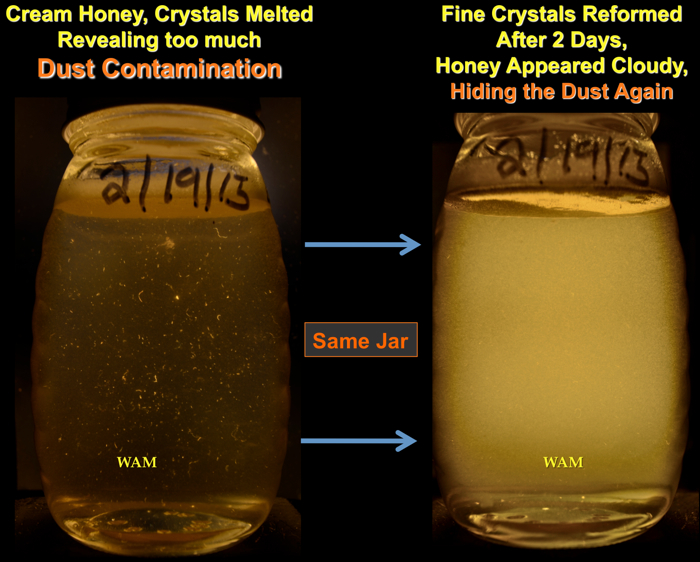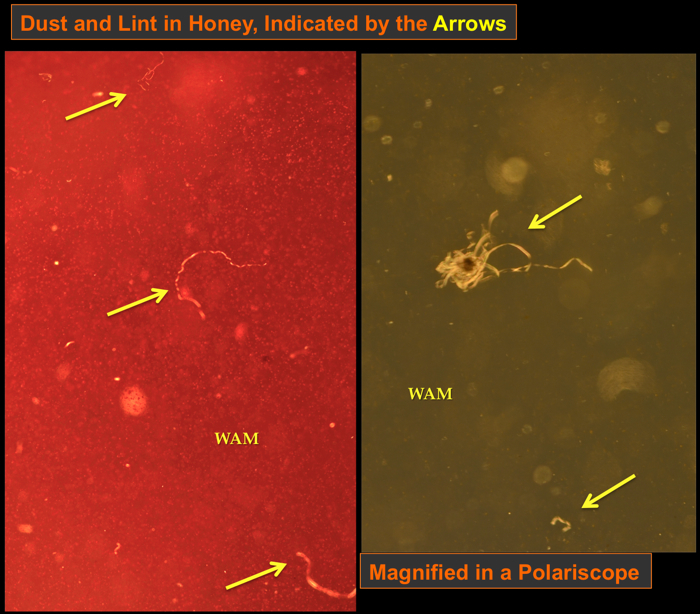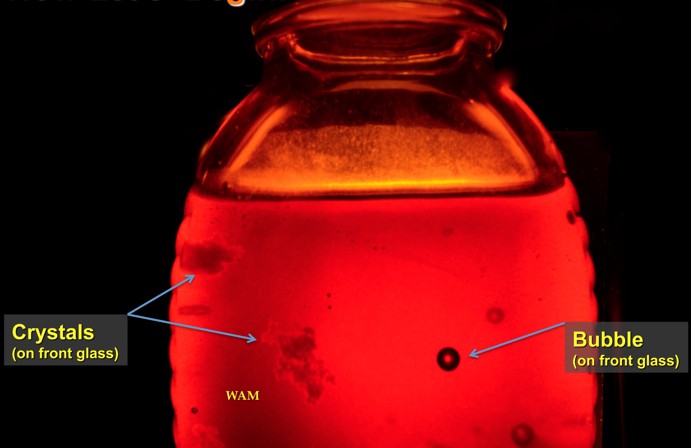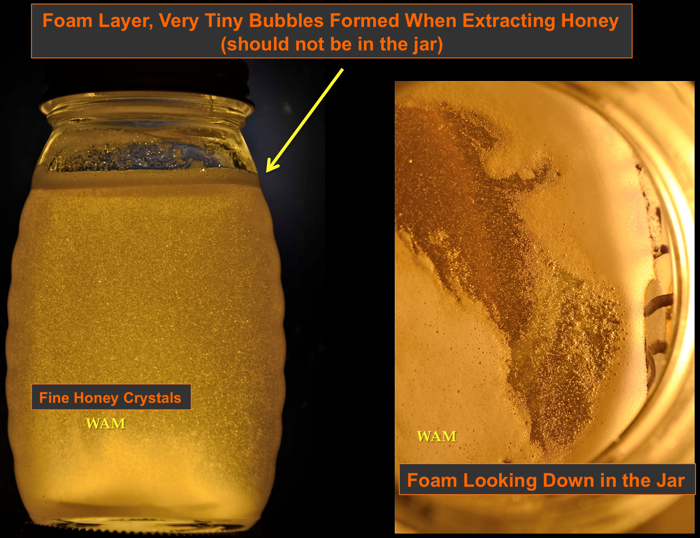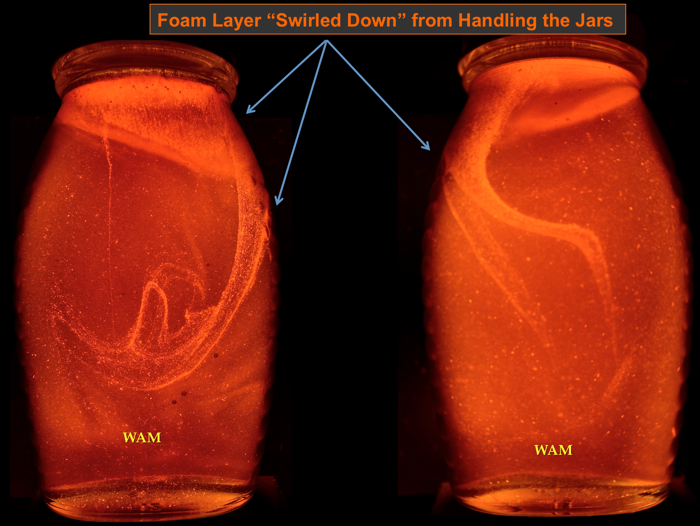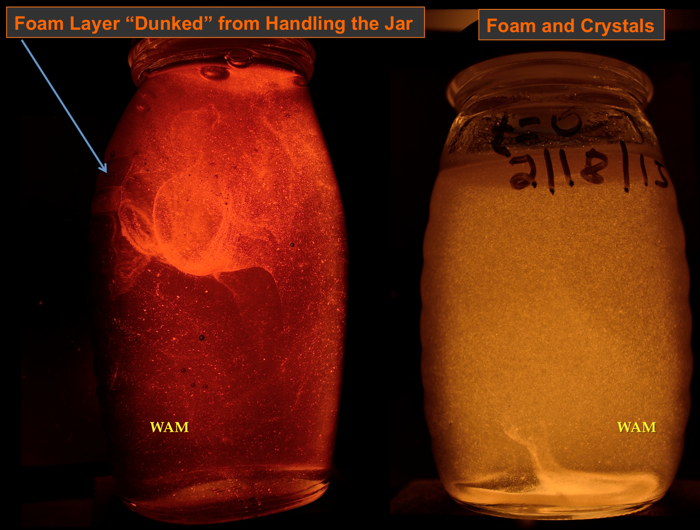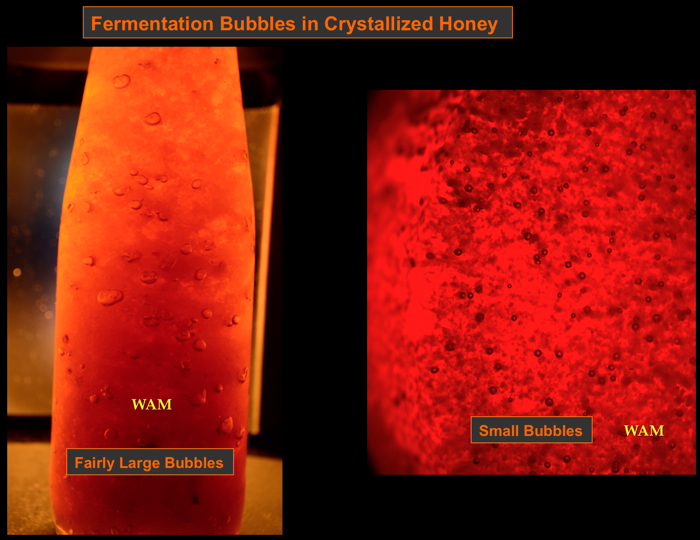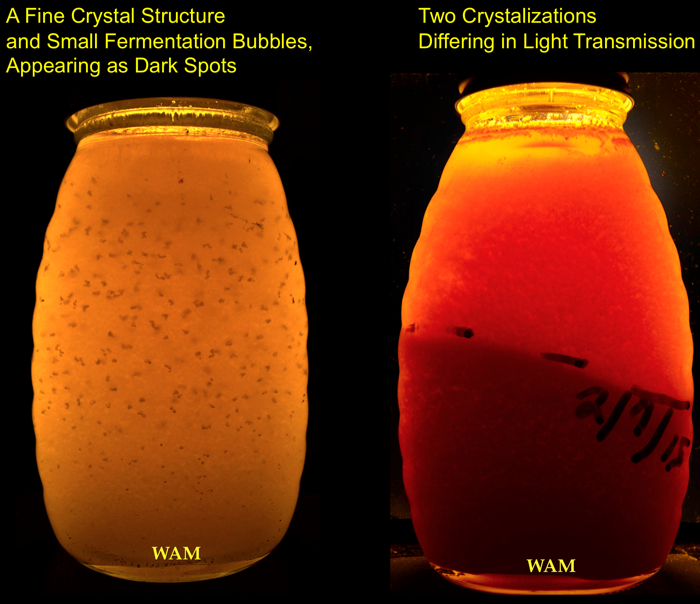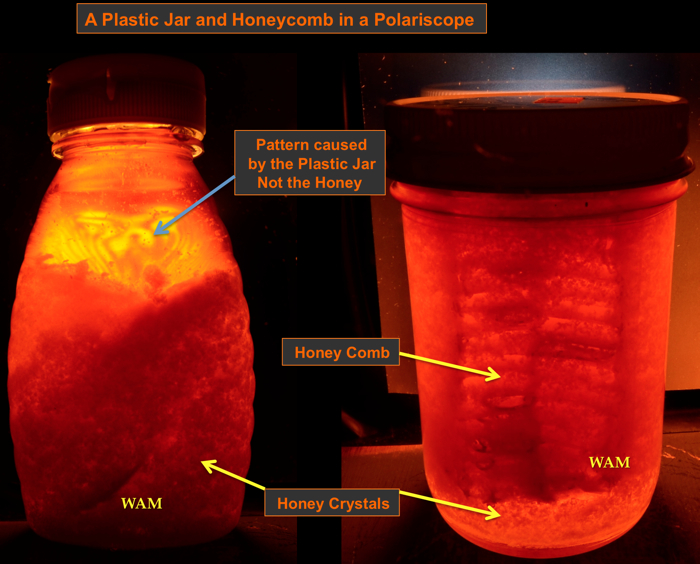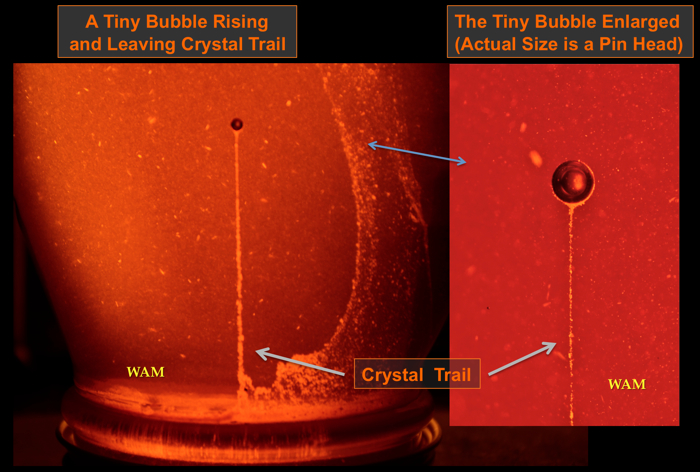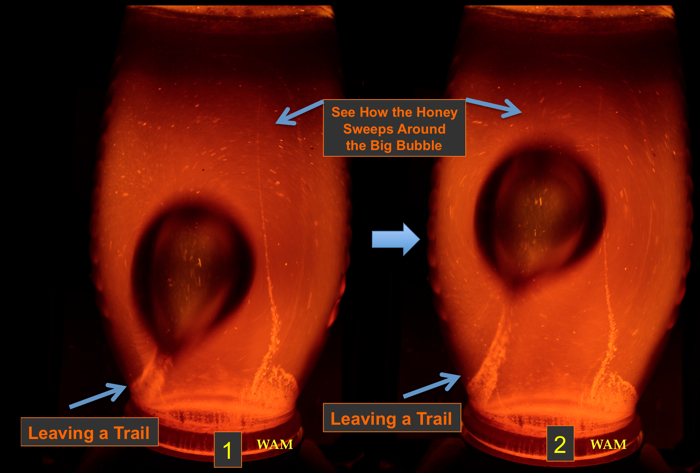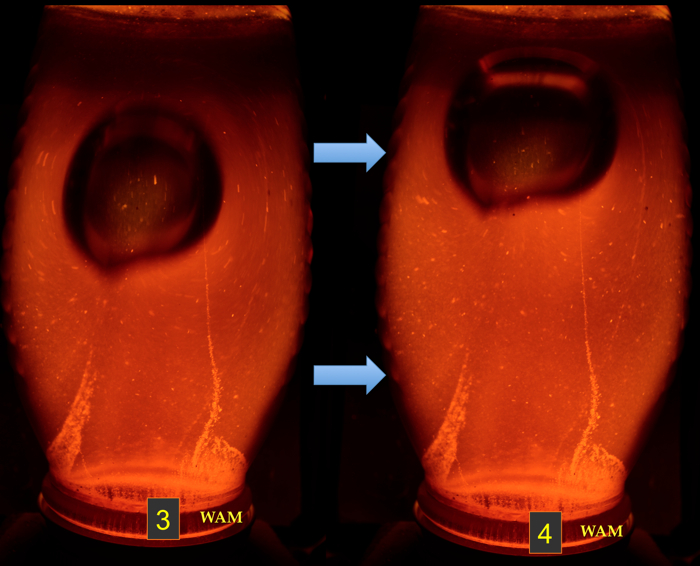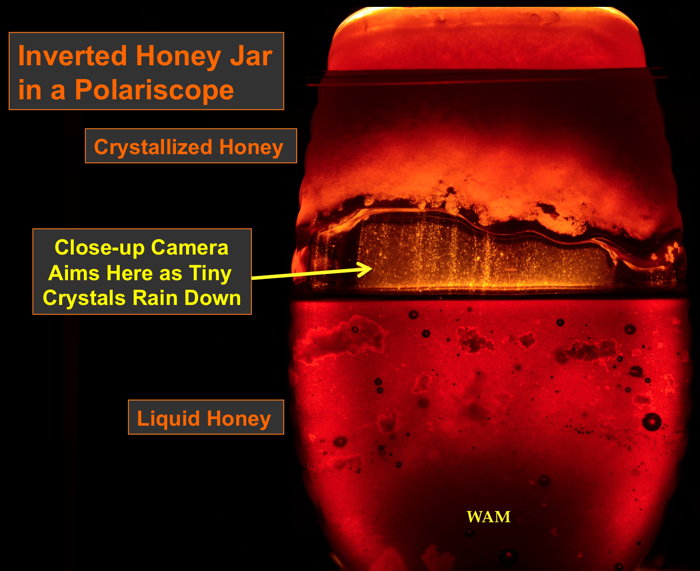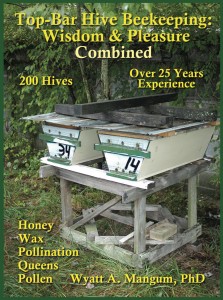Polariscope
A Polariscope and Honey
An Introduction to This Page
Beekeepers use a polariscope to see inside of a jar of honey. Without getting into the physics of light, basically the polariscope manipulates light in a special way to remove the background glare, allowing fine details to appear from inside the honey. Normally regular sunlight or room light hides those details.
To understand the importance of a polariscope, this page has three main parts: a list of things to see in a honey jar using a polariscope, constructing a polariscope, and artwork created using a polariscope.
Below is an extensive photographic list of the things a polariscope can detect in honey. Study the pictures and learn what to look for, and how to identify various things found in honey. Please do not copy my photographs as I hold the copy rights on them, as with the other photographs on my web pages. The photographs will stay here for your reference. I will add to this photographic list as I buy additional interesting honey jars. Many new beekeeper sell honey now. Consequently, I see old mistakes repeated. For education use only, I buy those honey jars, the inferior ones, shown below. (Years ago, I quit producing honey, not wanting to compete with beekeepers.)
After the photographic list comes a set of plans for building a polariscope, including pictures on orienting the polarizing filters correctly. I have up dated these plans with an LED 100 Watt bulb, which does not get hot. For many of the photographs shown below, I used my polariscope with two LED 100 Watt bulbs, but that is not necessary for normal use.
We think of the polariscope as a utilitarian tool, purely practical. After the construction plans, I show how to use the polariscope, perhaps to create art, with pictures and a movie clip.
What the Polariscope Detects in Honey
With a polariscope, beekeepers look for honey crystals, dust, bubbles, foam, bits of wax, soot from the smoker, and fibers from straining honey with cheesecloth (which I do not recommend). The photograph below compares a honey jar when seen in sunlight and when seen in the polariscope. Besides the fine crystals, notice – no light appears around the sides of the honey jar in the polariscope, that is, no glare. Watch fine crystals appear in a honey jar when I slide down the second filter (two times) in polariscope. Click here to see the movie clip.
Larger crystals have a jagged edges as shown below. Bits of wax in honey look softer and appear white. Soot from the bee smoker appears solid black.
Dust and lint can contaminate honey during processing. A polariscope detects these impurities, which should not be in the honey.
Here is a magnified photograph of lint in store-bought honey. The jars were in my special polariscope with two 100 watt LED bulbs on a dimmer for better light control to match to the camera (scroll down for those details).
Big air bubbles appear as a dark ring with a clear center as shown below, where tilting the jar trapped the air.
Very fine bubbles can form during honey processing. They rise to the surface, and accumulate there as a layer, called foam as shown below. Foam should not be in a honey jar. Rather it should remain back in the honey settling tank.
The foam layer can get turned deeper into the honey when handling the jar. The polariscope detects the strange foam patterns in the honey, which can include very fine bits of wax.
And this one that looks like a tunnel….
Honey fermentation (honey spoilage) can cause bubbles too. Fermentation bubbles usually occur with a matrix of honey crystals as shown below.
Here is another photograph with light honey crystals and the fermentation bubbles appearing dark.
Besides beekeepers checking their honey with a polariscope for quality control, those competing in honey shows need a polariscope. The honey judge uses a polariscope. The other beekeepers entering honey have polariscopes too.
Any tiny speck of crystal, lint or dust, seen in the honey jar, detected by the polariscope, will cause disqualification.
Now without the honey. To prepare for the honey show, first put your empty jars in the polariscope. Look for any strange distracting pattern in the glass that could detract from the honey when seen in the polariscope. For some jars, the glass (or the plastic) produces patterns. Some beekeepers even have special show jars, used only for honey shows because they look good in the polariscope. Below is a jar with an imperfection in the glass.
Plastic honey jars in the polariscope typically appear with weird patterns as shown below. I recommend not using them in honey shows if possible. The jar on the right has a honeycomb in it. The polariscope still sees into the liquid honey around the edges. (I think it looks better if the beekeeper puts the honeycomb in the jar oriented “up” not “down” as was done below. “Up” is the natural comb orientation.)
Below is a bubble, the size of a pinhead, ascending. It looked like the bubble contacted ultra-fine crystals in the honey. The crystals then moved around the bubble’s surface. The crystals left the bubble’s surface from behind as a trail. In addition, the bubble is so small, no clear area of light transmission is in the center, just an opaque curved wall.
From a tiny bubble to a huge bubble. Flip over a honey jar and the big bubble races to the top (sequence 1, 2, 3, 4). The honey sweeps around the bubble, getting out of its way. Some beekeepers claim they can tell the moisture content of the honey, at least if it is low enough. All by the speed of the ascending bubble.
Polariscope Construction
Below is a set of plans that appeared in the January 2015 ABJ article. I put a 100 Watt LED bulb in mine, as we updated in the plans below. I was tired of the heat from a regular bulb, especially for the long hours judging a big honey show. Also I think the incandescent heat of a regular bulb slowly ruins the first (closest) polarizing filter. I did not use a mercury bulb for a polariscope. A polariscope is on the move so much. And if dropped, a mercury bulb might break. Then you have a poison to clean up with special rules and regulations. (Mercury is a poison.)
Also in the plans below, the Ground Glass is a white frosted glass. Try getting it at a craft store that sells stain glass.
When you install the polarizing filters, make sure they are crossed, so no light comes through them. That blackness removes the background glare. See my January 2015 ABJ article for more details on getting the filters. Note: these are special polarizing filters, not just gray pieces of plastic.
The polarizing filters come covered in a cloudy plastic protective film. Peel the film away right before installation. As shown in the plans above, glass covers the filters on both sides. Any trapped dust or scratch on the filters might appear as white marks. Usually it is not much of a problem, unless like me, you keep taking your polariscope apart, trying new things with it.
If the polarizing filters are not crossed, white background light (glare) comes through (because the filters are in a parallel orientation).
A “regular” one-bulb polariscope is fine for viewing honey, but my camera has different light sensitivities making a bright band in the middle of the jar.
So I doubled the light with two bulbs, which also spreads out the light.
The Polariscope and Art
Now for something different. Here is a honey jar flipped over. With the jar in the polariscope, I aimed the camera at the middle of the jar, where the crystals were streaming downing.
and another…
 Watch the short movie clip “Let It Rain.”
Watch the short movie clip “Let It Rain.”
You can support this work by purchasing a copy of my top bar hive book. Please do not copy the content of my website as I hold the copyrights. If you want to use the above information by streaming them to your meeting site for a presentation, consider buying a copy of my book as a fair trade. I formally agree to that exchange. Other beekeepers have done that swap, and it worked quite well. I have a very dependable web page host. If you have questions about linking your meeting site to my web page, use the contact email form at the bottom of the book-ordering page. To get to that page quickly, click on the book picture below.
Consider supporting these pages by making a donation. Click the donation button below and enter credit card or debit card information. Paypal handles all the security. Thank you….
W. A. Mangum, PhD


